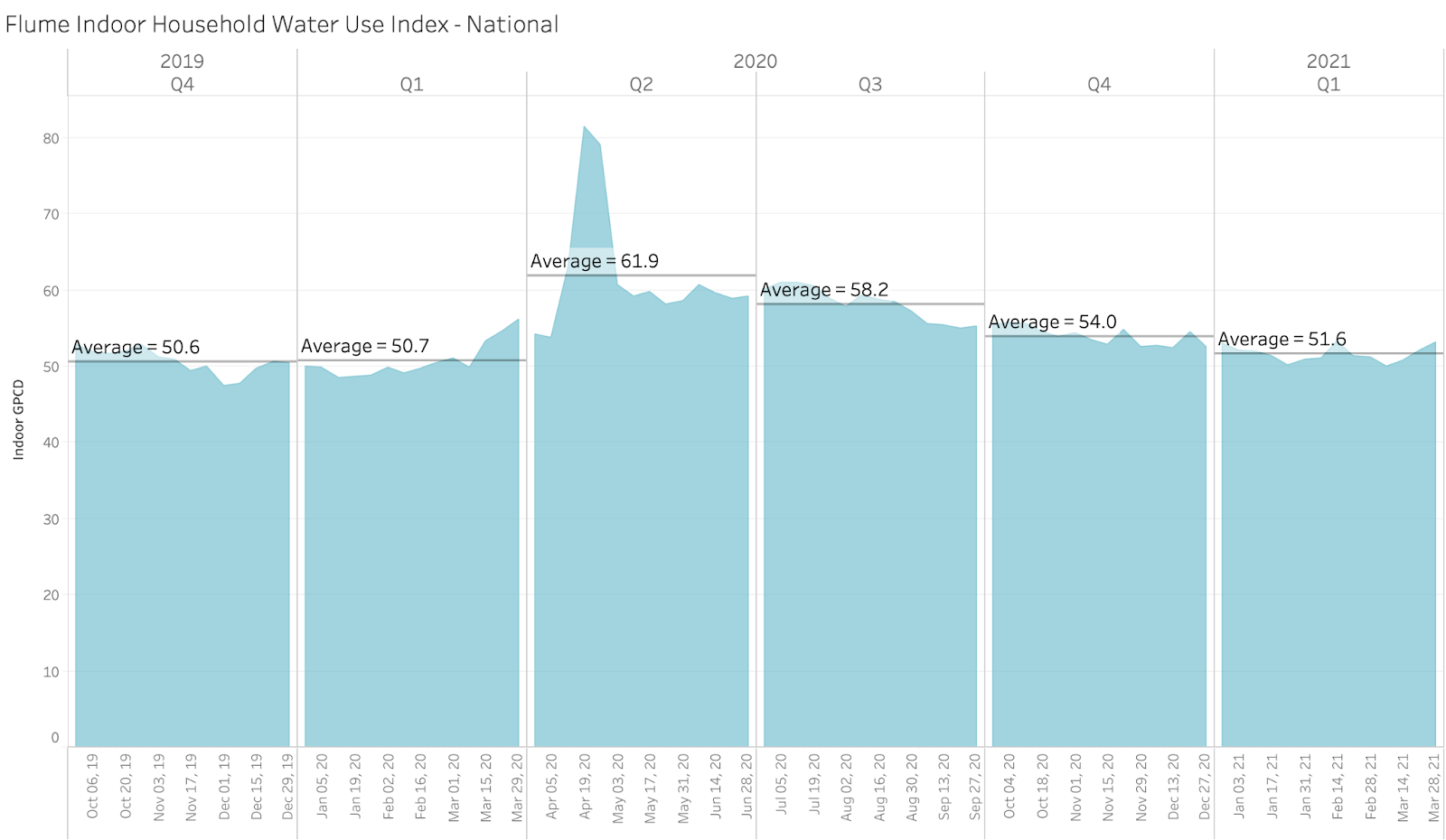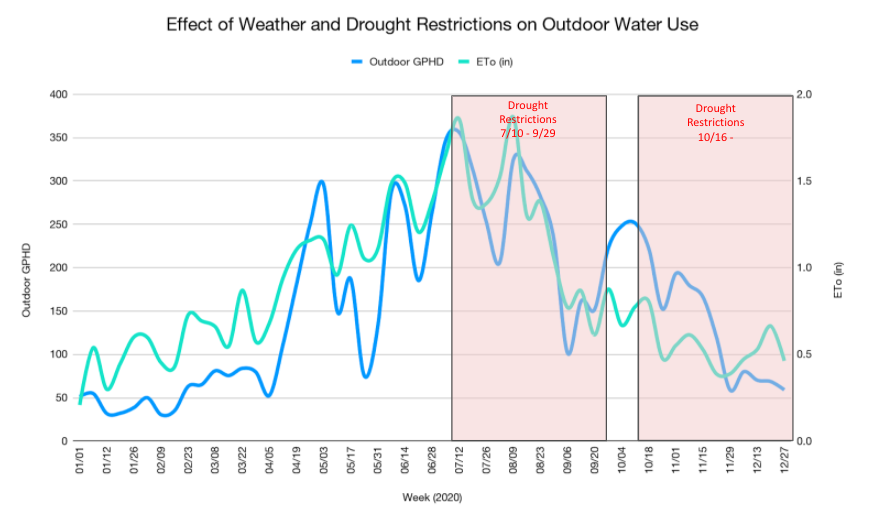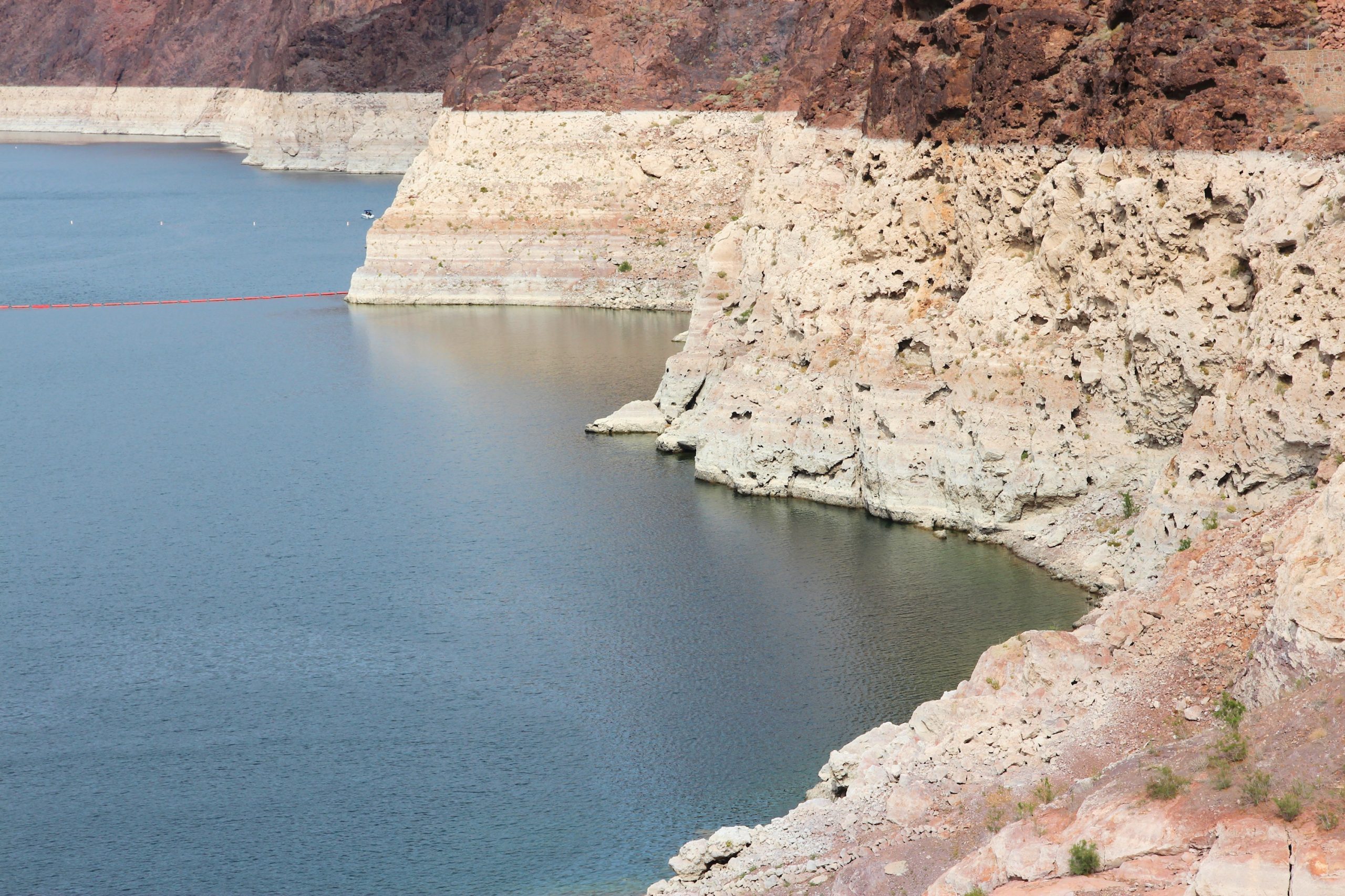Across the West, water providers are acutely on edge about drought. For many, plans are already being put into place to address the severity and continuance, the impact on water supply, and the effect on the environment.
These conditions have arrived at a pivotal time. Following the start of the COVID-19 pandemic in March of 2020, Flume tracked a significant increase in indoor Gallons per Capita per Day (GPCD) across the country. While the average indoor GPCD usually hovers around 50, indoor GPCD peaked at over 80 GPCD in the beginning of April 2020. This spike in indoor water use coupled with worsening conditions in the West add further stress to already limited water resources in many of these regions.

While restrictions have loosened heading into 2021, indoor residential water usage is still higher than rates seen in Q1 of 2020. Additionally, Flume has tracked a spike in outdoor household use that wasn’t previously seen in Q1 of 2020. This increase in water use is especially concerning considering current drought conditions.
To address this need, Flume has partnered with a number of water utilities to collect and analyze data about their real-time water use. Flume is a smart home water monitoring device that employs 5-second data collection to provide water utilities with detailed insights into their customers’ daily, monthly, and annual water consumption. Due to the frequency at which Flume can read water use, Flume is able to separate indoor and outdoor water use at the household level. This data is essential as utilities plan for water supply and water use into the future as it helps utilities understand the efficacy of past and current conservation programs and drought restrictions.
For example, Flume recently worked with a large utility in the Southwest that was seeking data about the efficacy of watering restrictions on outdoor water use. In the summer of 2020, this utility faced extensive drought conditions throughout their service area. In response, they implemented a number of drought restrictions in mid- and late-summer in order to reduce outdoor household water use. While not eliminating outdoor water use entirely, these local regulations had an important impact in reducing overall use. Flume was able to track a drop in outdoor household use following the implementation of drought restrictions.
As seen in the chart below, outdoor household use was on the rise prior to the drought restrictions, peaking at 350 (Gallons per Household per Day (GPHD). Following the second round of drought restrictions, outdoor GPHD was down to almost 50 GPHD. The drought restrictions coupled with a decrease in ETo and temperature led to a significant plummet in GPHD. When planning for future drought restrictions, they are now empowered by data that shows the success of past drought restrictions.

Flume also worked with another large metropolitan community that recently launched a weekend watering restriction program. This community asked residents to be cognizant of their watering habits while sticking to assigned days. Flume partnered with this utility to track the success of the restriction program.
As shown on the graph below, there was a drastic decrease in average outdoor household use on the day of the restriction (Sunday). Being able to track the success of their water restriction program helped this utility adjust and plan for future conservation efforts.

The importance of water management and conservation is at an all-time high as we enter a new phase of drought. At Flume, we work to empower utilities with great resources to understand the real-time impacts of their work and increase their ability to manage water use. For utilities looking at drought management and drought restrictions, better understanding of how communities engage with and respond to local utility ordinances is vital. Data empowers both utilities and consumers to track the efficacy of their water conservation efforts to improve their water budget and management, now and into the future.



